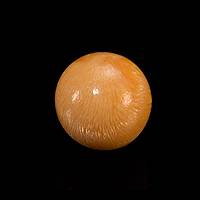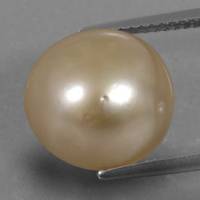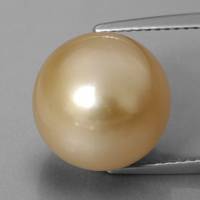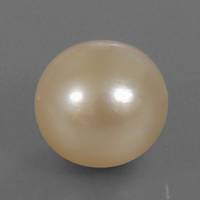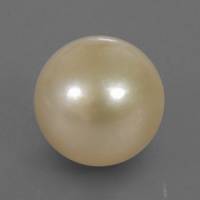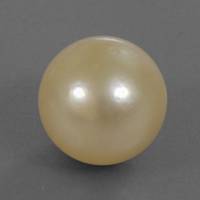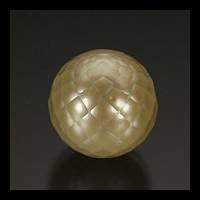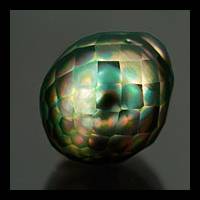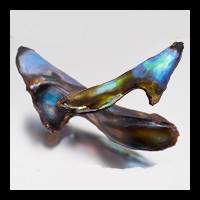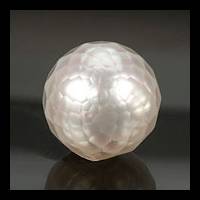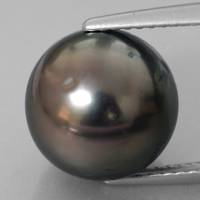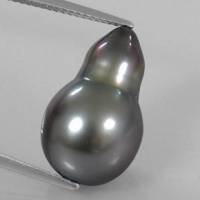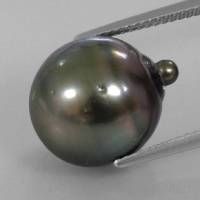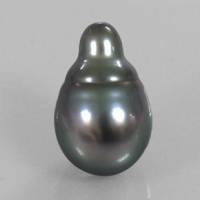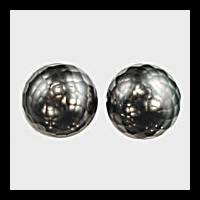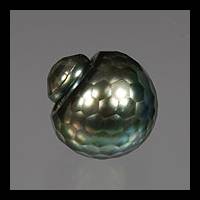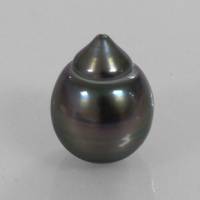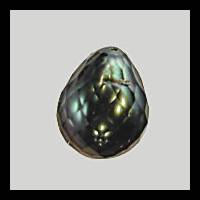Pearl
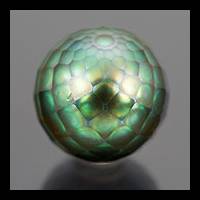
Pacific Ocean
22.54 carats
© Palagems
Pearls have been used for adornment for 6,000 years. Pearls do not require any processing because they show full gloss and attractive lustre in their natural state.
Pearls are used as gemstones, but are not regarded as true minerals due to their organic origin.
Pearl Gemstones by Colour
This table shows the variety of hues this gemstone can be found in. Click on a photo for more information.
Pearl Gemstones by Size
This table shows distribution of Pearl gemstone sizes that are listed on this site. This can give a good indication as to the general availability of this gemstone in different sizes.
Contributed photos
Lightest:3.5 cts
Heaviest:30.75 cts
Average:16.06 cts
Total photos:24
Do you have a larger Pearl? Why not upload a photo?
| Pearl Treatments | ||||||||||||
|---|---|---|---|---|---|---|---|---|---|---|---|---|
| White pearls are routinely bleached to lighten the dark spots of conchiolin (undetectable). Dyed mostly golden, pink, gray, silvery-black, chocolate colors: standard tests limited. Acetone or diluted acids may reveal the dye. Dyed black: LW - generally inert. Dyed yellow and golden (and/or heated): may show small spots of color concentration. LW - light blue to mottled pink orangy-yellow (even body color with uneven fluorescence is suspicious). Irradiated to create a grayish-black body color (gamma rays), bluish and bronze hue. Color division between whitish nacre and dark nucleus may sometimes be seen in the drill hole or using a strong transmitted light - Blue Chart Gem Identification, Herve Nicolas Lazzarelli, 2010, p 8 | ||||||||||||
| Pearl Simulants | ||||||||||||
| Fish-scale pearl is a glass or enamel coated with essence, which is produced from scales of certain fish. Other imitations are: parts of sea snails (antilles pearls); mussels (takara pearls from Japan); teeth (of the sea cow-dugong pearl); the mabé pearl (consists of a thin mother-of-pearl layer and some artificial part - clay or resin bead); plastic products. - Gemstones of the world, Walter Schumann, 2001, p 239 | ||||||||||||
| Physical Properties of Pearl | ||||||||||||
| Mohs Hardness | 2.5 to 4.5, Gemstones of the world (2001) More from other references | |||||||||||
| Specific Gravity | 2.60 to 2.85, Gemstones of the world (2001) More from other references | |||||||||||
| Cleavage Quality | None, Gemstones of the world (2001) | |||||||||||
| Fracture | Uneven, Gemstones of the world (2001) | |||||||||||
| Optical Properties of Pearl | ||||||||||||
| Refractive Index | 1.52 to 1.66, Gemstones of the world (2001) Black: 1.53 - 1.69More from other references | |||||||||||
| Birefringence | 0.156, Gemstones of the world (2001) More from other references | |||||||||||
| Pleochroism | Absent, Gemstones of the world (2001) | |||||||||||
| Dispersion | None, Gemstones of the world (2001) | |||||||||||
| Colour | ||||||||||||
| Colour (General) | White, pink, silver-, cream-, golden-coloured, green, blue, black., Gemstones of the world (2001) More from other references | |||||||||||
| Transparency | Translucent,Opaque, Gemstones of the world (2001) More from other references | |||||||||||
| Fluorescence & other light emissions | ||||||||||||
| Fluorescence (Long-Wave UV) | White pearls: common light blue to light yellow; Yellow and golden pearls: yellow-green, greenish brown to dark brown; Black: commonly pink to (orangy)-red, Blue Chart Gem Identification (2010) | |||||||||||
| Crystallography of Pearl | ||||||||||||
| Crystal System | Orthorhombic, Gemstones of the world (2001) | |||||||||||
| Geological Environment | ||||||||||||
| Where found: | Formed by saltwater oysters, some fresh-water mussels and more rarely by other shellfish., Gemstones of the world (2001) | |||||||||||
| Further Information | ||||||||||||
| Mineral information: | Pearl information at mindat.org | |||||||||||
| Significant Gem Localities | ||||||||||||
| ||||||||||||

